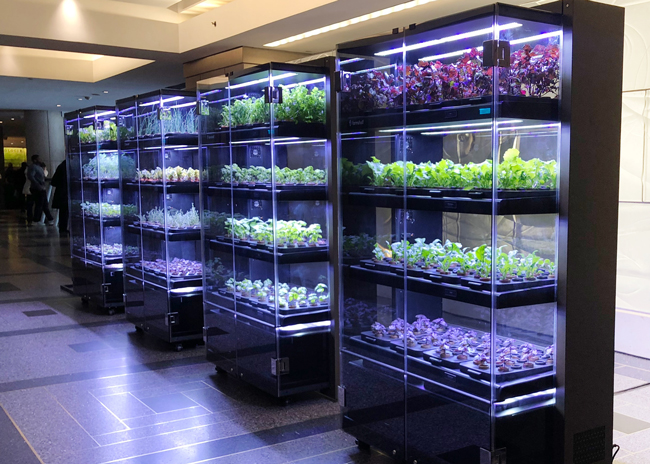Fermented foods are on the hot list for chefs today. Fermented foods first made waves in the foodservice industry back in 2018, with use up 149% in restaurants that year, according to Statistica. Fermentation can help stem product waste by providing a way to preserve unused ingredients.
In foodservice, there has been much focus on beverage offerings in recent years, which has resulted in a proliferation of innovative concoctions, unique flavor profiles, and a focus on healthful and functional ingredients.
Are vertical and indoor farms going to evolve in the foodservice arena?
Four business leaders share a few of the ways in which they’ve been working to ensure that they come out of the pandemic stronger and better positioned than they were when it started.
What a year it’s been. Forced by pandemic-induced closures, capacity restrictions and dramatic changes in consumer behavior, the foodservice industry has experienced what at this time last year might have seemed like an apocalyptic sci-fi narrative.
With the current trends leaning more toward cleaner living and simplifying diets, peasant foods are expected to see a resurgence this year.
With the complexity of running a restaurant or other foodservice institution, it’s all too easy to lose track of the waste stream. “Controlling waste is about menu, mindset and management,” says foodservice consultant Arlene Spiegel, FCSI, of New York-based Arlene Spiegel & Associates. “At the end of the day, did you sell out or throw out food? Did you overproduce, or are you forecasting production correctly?”
Foodservice in the gaming sector continues to evolve, pandemic or not.
No operator wants to make an emergency repair call, but sometimes they’re completely unavoidable.
The open kitchen concept has become one of the biggest trends in restaurant design. When customers see an open kitchen, they often assume they see the whole production process. But is that truly possible? And is it practical from an operational standpoint?
In a time when just holding on would suffice, some restaurant operators continue to plow ahead, determined to grow. It’s an inspired group. These five multiunit operators have an acute focus on their niche and a solid plan for growth, which for most means a slow and steady approach to expansion — with one intent on moving at super speed.
A quick view of what’s happening with delivery, curbside pickup and any other variation of off-premises an operator can imagine.
By taking care of equipment and working closely with service agencies, operators can reduce their repair costs and help keep staffers safe.
The takeout era has brought along with it some alternative ways of looking at equipment, food halls, campus dining and c-stores.
The post-pandemic future of the foodservice industry remains uncertain. But for most operations, the future will likely involve simpler, streamlined menus; more prepackaged grab-and-go fare; more emphasis on delivery; and greater utilization of commissaries and ghost kitchens.
The new year brings another new version of the so-called new normal.






